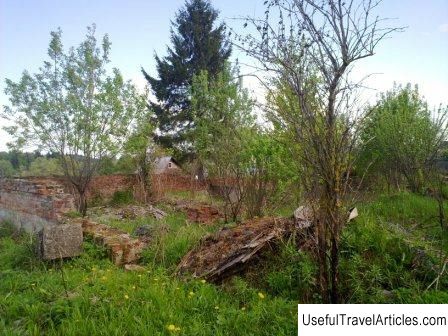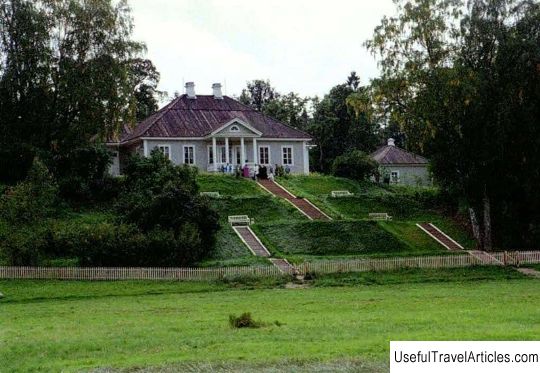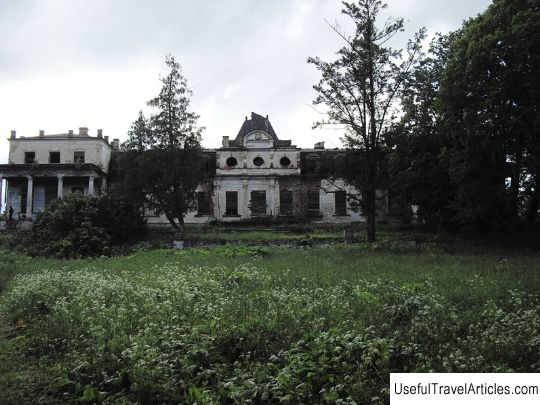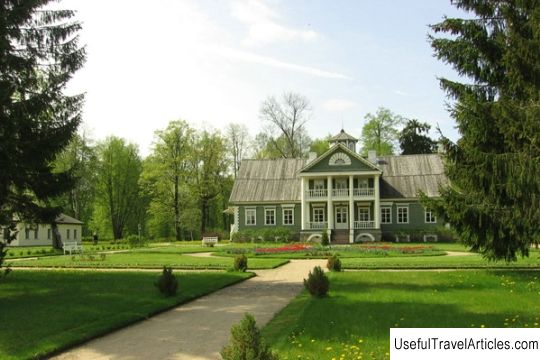Manor Bystretsovo description and photo - Russia - North-West: Pskov region
Rating: 8,9/10 (711 votes) 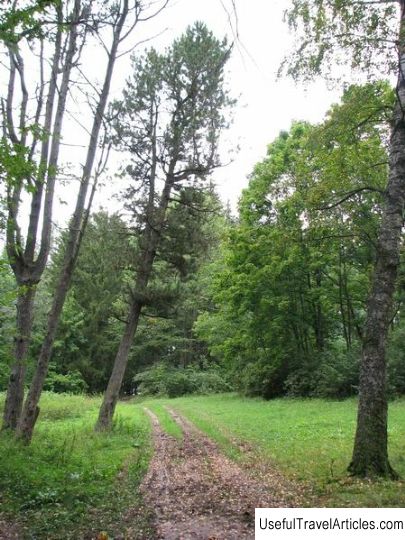
Bystretsovo estate description and photo - Russia - North-West: Pskov region. Detailed information about the attraction. Description, photos and a map showing the nearest significant objects. Photo and descriptionAbout 40 kilometers east of Pskov, on the left bank of the Cherekha, there is the ancient village of Bystretsovo. Once upon a time there was a noble estate. In the middle of the 18th century, the estate belonged to Nikifor Ivanovich Elagin. The plan of the estate in 1782 was simple: most of the estate had a rectangular outline, in the center of which the house was located, it was surrounded by a rampart, trees grew on the rampart. Later the estate passed to Anna Lukinichna Shishkova. Further, the estate, inherited from Shishkova, is owned by Fyodor Petrovich Simansky. In addition to them, the owner of these lands was the noble family of the Borozdins. In the 20s of the XIX century, the estate was owned by Mikhail Alexandrovich Nazimov (1801-1888), who was a representative of the Pskov branch of the most ancient noble family. Having received an excellent education, in 1816 he served first in the horse artillery, then in the Guards Horse Pioneer Squadron. In 1823 Nazimov became a member of the Decembrist Society. In 1846 he returned from exile and lived on the Bystretsovo estate, which he inherited from the division of the family estate. In 1856, a zemstvo school was founded by Nazimov. Under Mikhail Alexandrovich, Bystretsovo turned into an exemplary farm. But at the age of 67 Nazimov lost his sight, and he decided to sell the estate. The "penultimate of the Decembrists" died in 1888, was buried at the Dmitrovskoye cemetery, in Pskov. In 1868-1904, the estate was owned by a major public figure Nikolai Fyodorovich Fan der Fleet, then after his death the estate belonged to to his wife. The spouses continued the Nazimov case. At his own expense, Nikolai Fedorovich maintained a school in the village of Zaikovo, and then in 1870 built a school in Bystretsovo. In addition, Fan der Fleet took care of the zemstvo hospital with an outpatient clinic and a pharmacy, which was also in his support. But most of all, Fan der Fleet was fascinated by agriculture. The best varieties of berries and apples were grown on the estate, high-pedigree cattle were bred, new equipment and mineral fertilizers were used in the fields. In the early 1890s, the Fan der Fleet built a new house on the estate. It was a two-story, stone, plastered building. The windows and doors were made of oak. On two opposite sides of the house were rows of columns. Balconies were made on the second floor level. At the same time, the orchard was fenced with spruce plantations. Nikolai Fedorovich died in St. Petersburg in 1896, and was buried at the Smolensk cemetery. After the death of her husband, Elizaveta Karlovna continued his business. In 1901, in Bystretsovo, she created an agricultural school named after N.F. Fan der Fleet. After the death of Elizaveta Karlovna, relying on her will, the opening of the School of Industrial Art took place in Pskov in 1913. The estate passed to the Pskov district zemstvo. Before the October Revolution, the estate was owned by the Shakhovsky princes. In 1917, the estate was destroyed, in the 1920s-1930s there was a state farm-fruit nursery. Most of the buildings on the estate have been lost, only outbuildings made of boulders and bricks have survived. The manor park was created in the first half and at the end of the 19th century. Its area - 16 hectares, is located on the left bank of the Cherekha. The park planning structure is still generally readable now. Dug ponds have survived to this day, having a regular geometric shape. Besides, you can recognize a partially preserved low earthen rampart that once surrounded the park. The network of paths and paths in the park has been lost. The historical appearance of the park is distorted by a road, a residential building, a water pumping station, a greenhouse. Here you can see the age-old trees of ash, maple, oak. Their age is 130-160 years. There are 2 oak and linden trees, which are 230 years old. In addition, rare species of trees for the Pskov region grow in the park: Siberian larch, Siberian pine. The park is adorned with ornamental shrubs: common lilac, honeysuckle, yellow acacia, hazel and others. In 1996, the Pskov Regional Assembly of Deputies declared the old estate park in Bystretsovo a monument of gardening art. The historical appearance of the park is distorted by a road, a residential building, a water pumping station, a greenhouse. Here you can see the age-old trees of ash, maple, oak. Their age is 130-160 years. There are 2 oak and linden trees, which are 230 years old. In addition, rare species of trees for the Pskov region grow in the park: Siberian larch, Siberian pine. The park is adorned with ornamental shrubs: common lilac, honeysuckle, yellow acacia, hazel and others.                  We also recommend reading Golf Club description and photos - Tunis: Port El Kantaoui Topic: Manor Bystretsovo description and photo - Russia - North-West: Pskov region. |
